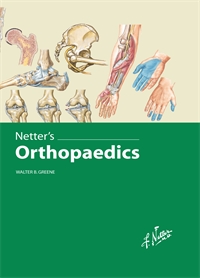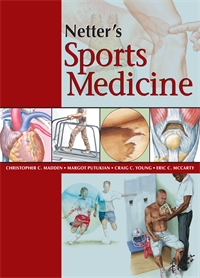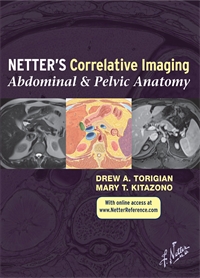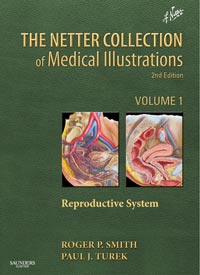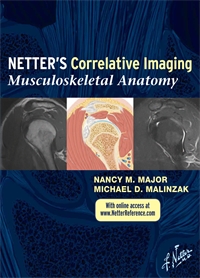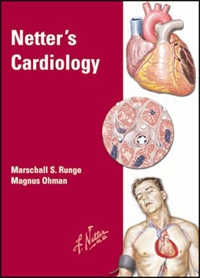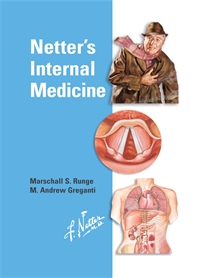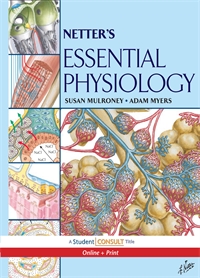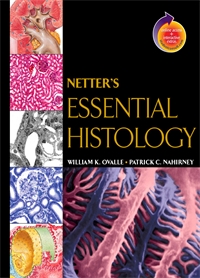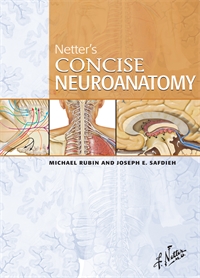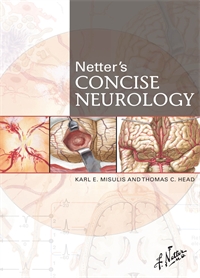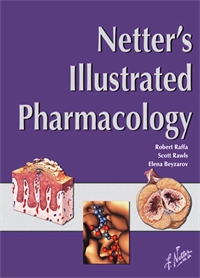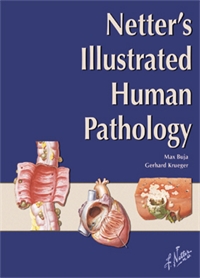Orthopaedics - Greene 1E
Author: Walter Greene, MD
ISBN: 9781929007028
- Page 3: Cell Division: The First Two Weeks
- Page 4: Gastrulation
- Page 5: Folding of the Gastrula and Early Development of the Nervous System
- Page 7: Myotomes, Dermatomes, and Sclerotomes
- Page 8: Muscle and Vertebral Column Segmentation
- Page 9: Development of Epimere and Hypomere Muscle Groups and their Nerve Innervation
- Page 10: Joint Development
- Page 11: Limb Rotation and Dermatomes
- Page 12: Growth factors
- Page 13: Intramembranous (mesenchymal) Bone Formation
- Page 14: Endochondral Ossification in a Long Bone
- Page 15: Ossification Present in the Newborn
- Page 17: Histology of Bone
- Page 18: Composition of Lamellar Bone
- Page 19: Close-up View of Epiphysis, Physis, and Adjacent Metaphysys
- Page 20: Physis (Growth Plate)
- Page 25: Normal Calcium and Phosphate Metabolism
- Page 26: Regulation of Calcium and Phosphate Metabolism
- Page 27: Dynamics of Bone Homeostasis
- Page 28: Pathologic Physiology of Primary Hyperparathyroidism
- Page 29: Clinical Manifestations of Primary Hyperthyroidism
- Page 30: Renal Osteodystrophy and Secondary Hyperparathyroidism
- Page 31: Albright's Hereditary Osteodystrophy
- Page 32: Childhood Rickets and Adult Osteomalacia
- Page 35: Risk Factors for Osteoporosis
- Page 36: Clinical Manifestations of Osteoporosis
- Page 39: Kyphoplasty: Pretreatment and Posttreatment Radiographs
- Page 41: Paget Disease
- Page 42: Osteonecrosis After Fracture
- Page 43: Stages of Osteonecrosis of the Femoral Head
- Page 47: Internal Femoral Torsion (In-Toeing)
- Page 48: Internal Tibial Torsion, External Tibial Torsion, and Thigh-Foot Angle
- Page 49: External Rotation of Hips
- Page 50: Malalignment Syndrome
- Page 51: Bowleg
- Page 53: Achondroplasia
- Page 55: Type 1 Osteogenesis Imperfecta
- Page 56: Types III and IV Osteogenesis Imperfecta
- Page 57: Treatment of Osteogenesis Imperfecta by Intramedullary Fixation
- Page 58: Spondyloepiphyseal Dysplasia Congenita
- Page 58: Spondyloepiphyseal Dysplasia Tarda
- Page 60: Pseudoachondroplasia
- Page 61: Multiple Epiphyseal Dysplasia
- Page 62: Diastrophic Dysplasia
- Page 63: Metaphyseal Chondrodysplasia, Schmid Type
- Page 64: Metaphyseal Chondrodysplasia, McKusick Type
- Page 66: Marfan Syndrome
- Page 68: Gaucher Disease
- Page 70: Synovial Joint
- Page 72: Composition of Articular Cartilage
- Page 73: Structure of Articular Cartilage
- Page 74: Synovial Fluid Examination
- Page 76: Histopathology of Osteoarthritis
- Page 77: Clinical findings in OA
- Page 77: Hand in OA
- Page 78: Surgical Alternatives for Osteoarthritis
- Page 79: Immunogenetics of Rheumatoid Arthritis
- Page 81: Immunopathogenesis of Rheumatoid Arthritis
- Page 82: Clinical Presentation of Rheumatoid Arthritis
- Page 83: Extraarticular Manifestations of RA
- Page 84: Radiographic Changes in RA
- Page 85: Systemic Juvenile Rheumatoid Arthritis
- Page 86: Ocular Manifestations in Juvenile Rheumatoid Arthritis
- Page 88: Ankylosing Spondylitis
- Page 89: Psoriatic Arthritis
- Page 90: Reactive Arthritis
- Page 92: Gouty Arthritis
- Page 94: Calcium Pyrophosphate Dihydrate Crystal Deposition Disease.
- Page 95: Hemophilic Arthritis
- Page 96: Ochronosis
- Page 101: Organization of Skeletal Muscle
- Page 102: Sarcoplasmic Reticulum and Initiation of Muscle Contraction
- Page 103: Biochemical Mechanics of Muscle Contraction
- Page 104: Muscle Length–Muscle Tension Relationships
- Page 105: Muscle Fiber Types
- Page 110: Grading of Ligament Sprains
- Page 111: Achilles Insertional Tendinopathy
- Page 113: Polymyositis/Dermatomyositis
- Page 114: McArdle Disease
- Page 115: Duchenne Muscular Dystropy
- Page 116: Fascioscapulohumeral Muscular Dystrophy
- Page 117: Myotonia Congenita and Myotonic Dystrophies
- Page 118: Nemaline Myopathy
- Page 120: Anatomy of Peripheral Nerve
- Page 122: Electrodiagnostic Studies of Nerves
- Page 125: Cerebral Palsy
- Page 126: Passive Range-of-Motion Exercises after Stroke
- Page 127: Myelodysplasia
- Page 130: Arthrogryposis Multiplex Congenita
- Page 131: Charcot-Marie-Tooth Disease Type 1A
- Page 133: Neurofibromatosis
- Page 134: Predisposing Factors to Compression Neuropathy
- Page 135: Nerve Injury in Compression Neuropathy
- Page 136: Common Sites of Upper Extremity Nerve Entrapment
- Page 138: Sunderland Classification of Nerve Injury
- Page 139: Charcot Arthropathy
- Page 140: Diabetes
- Page 144: Direct Causes of Osteomyelitis
- Page 145: Direct Causes of Osteomyelitis
- Page 146: Pathogenesis of Hematogenous Osteomyelitis
- Page 147: Spread of Hematogenous Osteomyelitis
- Page 147: Septic Arthritis Secondary to Concomitant Osteomyelitis
- Page 147: Acute Hematogenous Osteomyelitis
- Page 148: Clinical Manifestations of Hematogenous Osteomyelitis
- Page 149: Radiologic Changes in Healing Pahse of Late Acute Hematogenous Osteomyelitis
- Page 149: Bone Scan in Acute Osteomyelitis
- Page 150: MRI Early and Late Acute Ostemyelitis
- Page 153: Subacute Osteomyelitis
- Page 154: Subacute Osteomyelitis
- Page 155: Lesions in Diabetic Foot
- Page 155: Chronic Osteomyelitis
- Page 156: Septic Arthritis
- Page 157: Knee Joint Swollen and Held in a Flexed Position
- Page 158: Septic Joint Aspiration
- Page 159: Osteonecrosis and Hip Arthropathy Following Septic Arthritis
- Page 160: Tuberculous Arthritis
- Page 0: "Malignant Fibrous Histiocytoma of Bone
- Page 166: Bone Destruction in Osteosarcoma
- Page 166: Neoplasms in Bone
- Page 167: Staging of Musculoskeletal Tumors
- Page 168: Tumor Biopsy
- Page 169: Surgical Margins for Musculoskeletal Tumors
- Page 170: Osteoid Osteoma
- Page 171: Osteoid Osteoma
- Page 172: Solitary Osteochondroma
- Page 173: Solitary Osteochondroma
- Page 175: Nonossifying Fibroma
- Page 178: Giant Cell Tumor of Bone
- Page 179: Pathologic Fracture through Solitary Bone Cyst
- Page 180: Osteosarcoma
- Page 182: Chondrosarcoma
- Page 184: Ewing's Sarcoma
- Page 185: Ewing's Sarcoma
- Page 186: Lipoma
- Page 186: Myositis Ossificans
- Page 188: Liposarcoma
- Page 188: Synovial Cell Sarcoma
- Page 189: Malignant Fibrous Histiocytoma of Soft Tissue
- Page 190: Tumors Metastatic to Bone
- Page 195: Adult Respiratory Distress Syndromes (ARDS)
- Page 196: Fracture Patterns
- Page 197: Healing of Fracture
- Page 198: Primary Union
- Page 201: Types of Displacement
- Page 202: Closed Reduction
- Page 203: External Fixation
- Page 203: Compression of Buttress Plate
- Page 204: Interlocked Intramedullary Nail
- Page 205: Gustilo and Anderson Classification of Open Fractures
- Page 208: Nonunion of Fracture
- Page 209: Neurologic Complications of Fractures
- Page 210: Compartment Syndrome
- Page 211: Compartment Syndrome
- Page 212: Stress Fracture
- Page 214: Reflex Sympathetic Dystrophy
- Page 217: Greenstick and Torus Fractures in Children
- Page 218: Remodeling of Fracture of Proximal Humerus in a Child
- Page 219: Peterson Classification of Physeal Fractures
- Page 221: Physeal Bar after Fracture of Distal Femur
- Page 222: Fracture in Abused Children
- Page 224: Osgood-Schlatter Condition
- Page 228: Congenital Transmetacarpal Amputation
- Page 229: Forearm Amputation
- Page 230: Body-Powered and Myoelectric Prosthesis
- Page 231: Bony Overgrowth
- Page 234: Amputations of the Foot
- Page 235: Ankle Disarticulation (Syme Amputation)
- Page 236: Transtibial Amputation
- Page 237: Knee Disarticulation Amputation
- Page 237: Transfemoral Amputation
- Page 238: Complications of Amputations
- Page 241: Systemic Effects of Immobilization
- Page 242: Passive Exercise
- Page 242: Active-Assisted Exercise After Total Knee Replacement
- Page 243: Measurement of Range of Motion
- Page 244: Rehabilitation after Knee Injury or Operation
- Page 247: Orthotics
- Page 248: Canes, Crutches, and Walkers
- Page 252: Axial Skeleton
- Page 253: Second Lumbar Vertebra
- Page 254: Spinal Cord and Nerve Root Relationships to Vertebrae
- Page 255: Cervical Vertebrae
- Page 257: Anatomy of Lumbosacral Spine
- Page 258: Intervertebral Disk
- Page 259: Physical Examination
- Page 262: Cervical Radiculopathy
- Page 263: Cervical Spondylosis with Myelopathy
- Page 265: Lumbar Disk Herniation
- Page 267: Discectomy
- Page 269: Spinal Stenosis
- Page 271: Radiographic Signs of Cervical Spine Instability
- Page 272: Cervical Fractures
- Page 273: Thoracic and Lumbar Fractures
- Page 275: Congenital Muscular Torticollis
- Page 276: Klippel-Feil Syndrome
- Page 276: Atlantoaxial Rotatory Subluxation of C1 on C2
- Page 277: Congenital Scoliosis
- Page 278: Scoliosis
- Page 280: Scheuermann Disease
- Page 281: Spondylolisthesis
- Page 285: Anterior View Scapula and Proximal Humerus
- Page 286: Posterior View Scapula and Proximal Humerus
- Page 287: Shoulder Joint Opened (lateral view)
- Page 287: Axillary and Brachial Arteries
- Page 288: Posterior View of Shoulder and Arm
- Page 289: Shoulder Range of Motion
- Page 291: Rotator Cuff Disease
- Page 291: Acromioplasty
- Page 292: Osteoarthritis of the Shoulder
- Page 292: Prosthetic Replacement, Shoulder Joint
- Page 294: Adhesive Capsulitis
- Page 296: Brachial Plexus
- Page 297: Fracture of Proximal Humerus
- Page 298: Fracture of the Clavicle
- Page 299: Fracture of Shaft of Humerus
- Page 299: Fracture of Proxmial Humerus in Children
- Page 300: Anterior Dislocation, Glenohumeral Joint
- Page 302: Posterior Dislocation, Glenohumeral Joint
- Page 303: Acromioclavicular Dislocation
- Page 304: Rupture of Long Head Biceps Brachii Muscle
- Page 305: Sprengel Deformity
- Page 308: Bones of Right Elbow Joint
- Page 310: Bony Attachments of Muscles of Forearm
- Page 311: Median Nerve
- Page 312: Ulnar Nerve
- Page 313: Radial Nerve
- Page 314: Measurement of Flexion/Extension
- Page 315: Measurement of Pronation/Supination
- Page 316: Prosthesis for Total Elbow Arthroplasty
- Page 317: Epicondylitis
- Page 318: Cubital Tunnel Syndrome
- Page 319: Proximal Compression of Median Nerve
- Page 321: Radial Nerve Compression
- Page 322: Ligaments of Right Elbow Joint
- Page 324: Fat Pad Locations
- Page 325: Elbow Fractures
- Page 326: Fracture of Head and Neck of Radius
- Page 327: Olecranon Fracture
- Page 328: Monteggia Fracture/Dislocation
- Page 329: Supracondylar Fracture of the Humerus
- Page 331: Dislocation of Elbow Joint
- Page 333: Congenital Dislocation of Radial Head
- Page 334: Osteochondrosis of the Capitellum
- Page 336: Bones and Joints of Hand
- Page 338: Extensor Tendons at Wrist
- Page 339: Flexor Tendons, Arteries, and Nerves at Wrist
- Page 339: Intrinsic Muscles of Hand
- Page 340: Flexor and Extensor Tendons in Fingers
- Page 341: Boutonniere and swan-neck deformity
- Page 342: Measurement of Wrist Motion and Finger motion, Lack of Finger Flexion, and Thumb Opposition
- Page 343: Positive Froment Sign
- Page 344: Hand of Benediction
- Page 345: Osteoarthritis of Thumb Carpometacarpal Joint
- Page 346: Radiograph in Kienbock Disease
- Page 347: Trigger Finger
- Page 347: De Quervain Tenosynovitis
- Page 348: Dupuytren Disease
- Page 349: Ganglion of Wrist
- Page 351: Infections of the Hand
- Page 352: Felon and Paronychia Infections
- Page 353: Fractures of the Distal Radius
- Page 354: Fracture of Scaphoid
- Page 355: Base of Thumb Metacarpal and Metacarpal Neck Fractures
- Page 356: Fracture of Proximal Phalynx
- Page 357: Flexor Tendon Anatomy and Injuries
- Page 359: Gamekeeper Thumb
- Page 360: Syndactyly
- Page 360: Polydactyly
- Page 361: Paraxial Radial Hemimelia
- Page 364: Hemipelvis
- Page 365: Sacrum and Coccyx
- Page 365: Hip Joint
- Page 366: Blood Supply to Femoral Head
- Page 367: Bony Attachments of Buttock and Thigh Muscles
- Page 368: Muscles of Hip and Thigh
- Page 369: Muscles of Hip and Thigh
- Page 370: Lumbar Plexus
- Page 371: Sacral and Coccygeal Plexuses
- Page 372: Arteries and Nerves of Thigh
- Page 373: Measurement of Hip Flexion/Extension and Thomas Test
- Page 374: Trendelenberg Test
- Page 375: Osteoarthritis of the Hip
- Page 375: Osteoarthritis of the Hip
- Page 378: Stable Pelvic Ring Fractures
- Page 379: Unstable Pelvic Fractures
- Page 380: Internal Fixation for Type of Vertical Shear Fracture
- Page 381: Acetabular Fractures
- Page 382: Acetabular Fracture Fixation
- Page 383: Posterior Dislocation of Hip
- Page 383: Anterior Dislocation of Hip, Obturator Type
- Page 384: Fracture of Femoral Neck and Intertrochanteric Fracture of Femur
- Page 385: Intertrochanteric Fracture of Femur
- Page 387: Femoral Shaft Fracture
- Page 388: Developmental Dysplasia of the Hip
- Page 389: Clinical Signs in Older Infant with Developmental Dysplasia of the Hip
- Page 390: Pavlik Harness
- Page 391: Legg-Calve-Perthes Disease
- Page 392: Slipped Capital Femoral Epiphysis
- Page 393: Proximal Femoral Focal Deficiency
- Page 396: Anterior view of Knee and Hip-Knee-Ankle Mechanical Axis
- Page 397: Medial and Lateral Views of the Knee
- Page 398: Axial View of Meniscus
- Page 399: Collateral and Cruciate Ligaments of the Knee
- Page 400: Fascial Compartments of the Leg
- Page 401: Tibial Nerve and Cutaneous Innervation of Sole
- Page 403: Zero Starting Position and Arc of Flexion
- Page 405: Unicondylar Knee Arthroplasty
- Page 406: Total Knee Arthroplasty
- Page 407: Progression of Osteochondritis Dissecans
- Page 409: Types of Meniscal Tears
- Page 409: Discoid Meniscus Variations
- Page 411: Subluxation and Dislocation of Patella
- Page 412: Bipartite Patella
- Page 413: Synovial Plica
- Page 414: Fracture of Distal Femur
- Page 415: Tibial Plateau Fractures
- Page 416: Fracture of the Patella
- Page 417: Fracture of Tibial Tubercle, Tibial Spine, and Tibial Shaft
- Page 418: Dislocation of the Knee
- Page 419: Rupture of the Anterior Cruciate Ligament
- Page 421: Rupture of Posterior Cruciate Ligament
- Page 421: Congenital Dislocation of the Knee
- Page 422: Posteromedial Bowing of the Tibia
- Page 423: Anterolateral Bowing of the Tibia and Congenital Pseudarthrosis of Tibia
- Page 424: Infantile Tibia Vara
- Page 428: Bones of Foot
- Page 429: Bones of Foot
- Page 430: Bony Attachments of Muscles of Foot
- Page 431: Ligaments of the Ankle and Foot
- Page 432: Muscles, Arteries, and Nerves of Sole of Foot
- Page 433: Common Peroneal Nerve
- Page 435: Muscles, Arteries, and Nerves of Front of Ankle and Dorsum of Foot
- Page 436: Phases of Gait
- Page 436: Ankle Dosiflexion/Plantarflexion
- Page 437: Inversion and Eversion
- Page 438: Radiographs Depicting Arthritis in Various Sites of the Foot
- Page 439: Triple Arthrodesis
- Page 440: Posterior Tibial Dysfunction
- Page 441: Hallux Valgus
- Page 443: Lesser Toe Deformities (Claw Toe, Hammertoe, and Mallet Toe)
- Page 444: Cavovarus Foot
- Page 446: Ingrown Toenail
- Page 447: Lauge-Hansen Classification of Ankle Fracture
- Page 449: Intraarticular Fracture of the Calcaneus
- Page 450: Fracture of Talar Neck
- Page 451: Injury to Tarsometatarsal (Lisfranc) Joint Complex
- Page 452: Injury to Tarsometatarsal (Lisfranc) Joint Complex
- Page 453: Injury to Metatarsals
- Page 454: Fracture of Tibia in Children
- Page 454: Thompson test
- Page 455: Congenital Clubfoot
- Page 455: Metatarsus Adductus
- Page 456: Polydactyly, Syndactyly, Congenital Curly Toe, and Overlapping Fifth Toe
- Page 457: Flexible Flatfeet
- Page 459: Tarsal Coalition
- Page 460: Accessory Navicular
- Page 461: Kohler Disease
